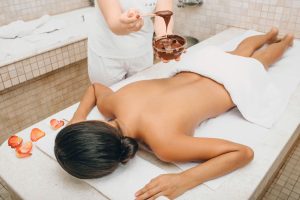Avoid These 5 Common Massage Mistakes for Maximum Benefit
When it comes to reaping the full benefits of massage therapy, many overlook essential preparations and precautions. Massage mistakes can significantly reduce the effectiveness of your session, leaving you less relaxed or not fully benefiting from the therapeutic effects. This comprehensive guide aims to identify the most common pitfalls and offer practical advice on what not to do before a massage, how to prepare for a massage, and after massage care tips to ensure you experience the best massage experience possible. Being mindful of these massage do’s and don’ts can elevate your practice, enhancing results and overall satisfaction.
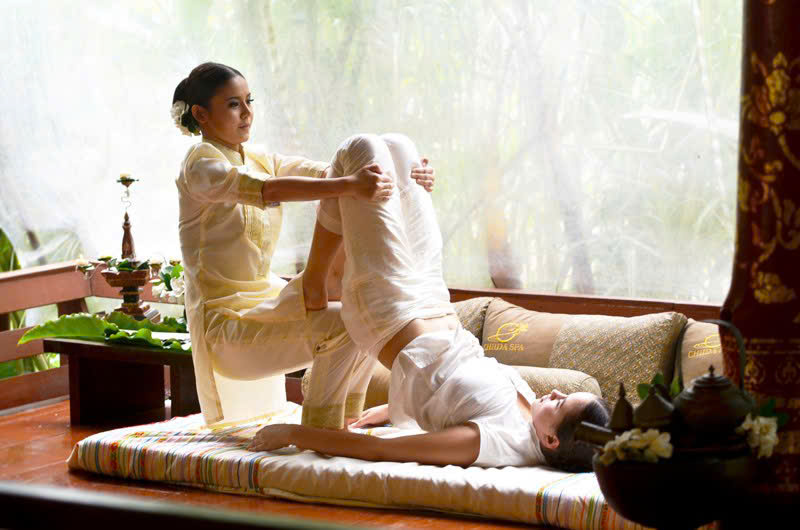
Massage mistakes
Understanding the most common massage mistakes to avoid can dramatically influence your therapeutic experience. These errors often stem from lack of preparation, misinformation, or neglect of post-session care. Many clients unknowingly contribute to reduced efficacy by making simple errors that sabotage their progress.
To truly harness the benefits of massage therapy, awareness of these mistakes is vital. By addressing these issues proactively, you can optimize your time and money, achieving lasting relief from stress, pain, or muscle tension. Let’s explore the top errors to avoid to ensure your massage sessions are both safe and effective.
Failing to communicate needs and preferences
Not communicating your needs properly can undermine the effectiveness of your massage. Every individual has unique requirements—some need deep tissue work, while others prefer lighter touches. If you neglect to inform your therapist about areas of pain or tension, they may inadvertently apply pressure that is either too much or too little.
Effective communication involves more than just voicing discomfort; it requires being specific about your expectations, such as focus areas or pressure preferences. Many clients hesitate to speak up, fearing they might disturb the therapist’s rhythm, but this can lead to reduced massage effectiveness or dissatisfaction.
Open dialogue during the session allows for adjustments and ensures your needs are prioritized. Remember, a good therapist welcomes your feedback as part of providing tailored care that enhances massage results.
Not hydrating before and after the session
Hydration plays a crucial role in maximizing massage benefits. Many overlook the importance of drinking water before and after their appointment. Water helps flush toxins released during massage, reduces soreness, and promotes muscle recovery.
Dehydration can lead to headaches, fatigue, and decreased circulation, undermining the positive effects of therapy. Avoiding adequate hydration is a common massage mistake that diminishes session benefits and may cause discomfort afterward.
To optimize results, it’s best to drink plenty of water prior to your appointment and continue hydrating afterward. This simple step aids in reducing massage effectiveness issues and enhances overall relaxation and healing.
Skipping the warm-up or post-session stretching
Many clients jump straight into their daily routines after a massage without allowing their bodies to settle. Including gentle stretching or warming up muscles before a massage can improve flexility and reduce stiffness. Similarly, neglecting post-massage stretching can inhibit long-term benefits.
These practices help maintain and extend the benefits of massage therapy, as well as prevent muscle tightness from returning quickly. Incorporating light movements before and after your session is a massage session tip that fosters better results and deeper relaxation.
Additionally, avoiding this step outside the session could lead to common massage mistakes to avoid, such as experiencing increased soreness or feeling less limber afterward. Proper post-massage routines support recovery and maintain the positive effects longer.
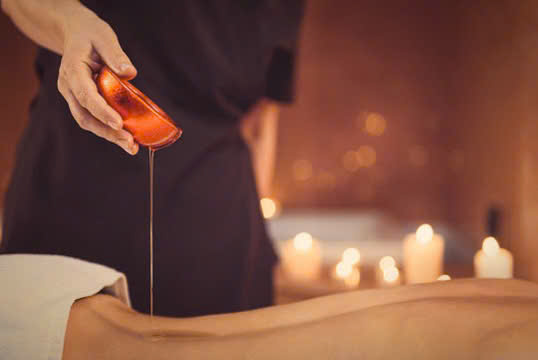
Ignoring post-massage care tips
Post-massage care is essential in preserving and enhancing the therapeutic effects. Ignoring after massage care tips can diminish the benefits and even cause discomfort. Many clients neglect to take sufficient time to rest, hydrate, or avoid strenuous activities afterward.
This oversight can reduce massage effectiveness, as your body needs time to process the adjustments made during the session. For instance, engaging in intense exercise immediately after may negate some of the benefits and cause muscle fatigue.
Incorporating simple post-massage routines—such as drinking water, resting briefly, or doing gentle stretching—can significantly improve the outcome. This proactive approach is part of improving massage results and ensuring the best massage experience.
Benefits of massage therapy
Massage therapy has long been celebrated for its wide-ranging benefits, which extend beyond simple relaxation. Understanding these beneficial effects motivates clients to avoid massage mistakes that may lessen these positive outcomes.
From relief of chronic pain to psychological stress reduction, massage offers a host of benefits of massage therapy backed by research. Beyond immediate relaxation, regular massage can improve circulation, boost immune function, and enhance emotional well-being.
People who stay informed about how massage works and incorporate proper techniques experience more profound health effects. Emphasizing the various benefits of massage therapy also highlights why it’s vital to approach each session with preparation and mindfulness, avoiding common pitfalls that compromise results.
Physical health benefits
Massage therapy is renowned for its ability to alleviate pain and improve physical health. It effectively targets muscle tension, joint stiffness, and soreness, providing relief for athletes, office workers, or individuals with chronic conditions.
Scientifically, massage promotes improved blood flow, stimulates the lymphatic system, and releases endorphins—natural painkillers. Such effects contribute to quicker recovery, increased flexibility, and overall physical resilience.
While these benefits are tangible, neglecting what not to do before a massage or failing to prepare for a massage can interfere with these physical gains. Proper preparation and care during and after ensure you maximize massage benefits.
Mental and emotional advantages
Beyond the physical realm, massage therapy has powerful effects on mental and emotional health. It reduces stress hormones like cortisol and stimulates the production of serotonin and dopamine, which elevate mood and promote relaxation.
Clients often report feeling calmer, more centered, and less anxious after sessions. This psychological boost complements physical healing, fostering holistic well-being.
However, common massage mistakes—such as rushing into a session unprepared or neglecting after massage care tips—can diminish the mood-enhancing effects. Understanding the best massage experience advice helps in experiencing these mental health benefits fully.
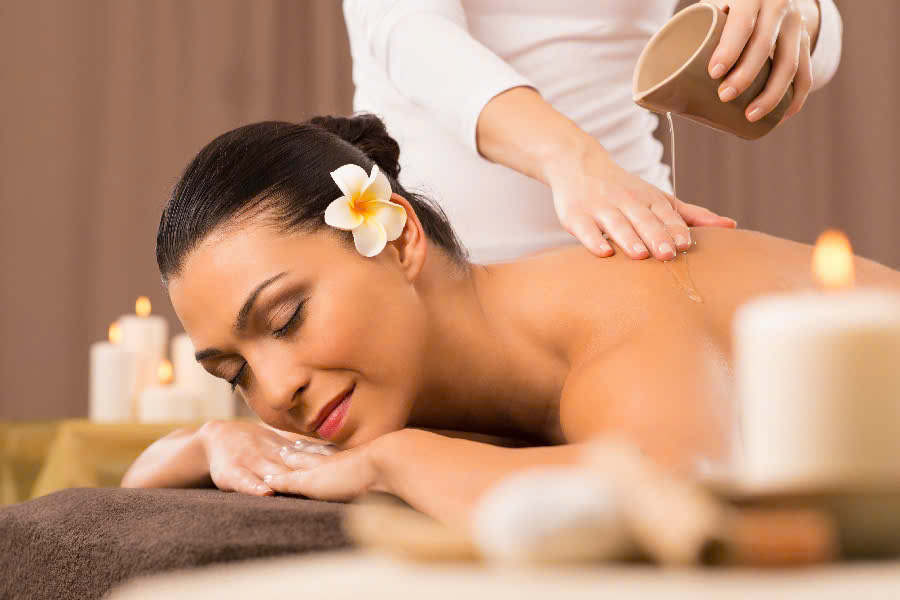
Long-term health improvements
Regular massage might contribute to addressing long-term health issues, including fibromyalgia, migraines, and depression. It can modify the perception of pain, improve sleep quality, and promote better posture.
Incorporating massage into your regular health routine, while avoiding massage do’s and don’ts, ensures sustained benefits over time. These long-term improvements hinge on consistent care, proper massage session tips, and attentive post-massage habits.
How massage enhances overall wellness
Healthy body-mind connections are reinforced through massage, fostering better lifestyle habits. Properly conducted sessions boost self-care routines, improve body awareness, and motivate healthier behaviors like regular exercise and balanced nutrition.
Understanding these symbiotic benefits emphasizes the importance of avoiding common massage mistakes to avoid, such as skipping sessions or neglecting to improve massage results, which could hinder the full spectrum of wellness benefits.
What not to do before a massage
Preparation is key for maximizing the benefits of massage therapy. Knowing what not to do before a massage can prevent disturbances during the session and ensure a smooth, relaxing experience. Many clients walk into sessions unprepared, causing unnecessary stress or discomfort.
These massage mistakes are often simple but impactful, such as not arriving on time, engaging in strenuous activities beforehand, or consuming substances that could interfere with relaxation. Being mindful of these pitfalls enhances the overall quality of your massage.
Avoiding heavy meals or alcohol
Consuming a heavy meal or alcohol before your appointment can adversely affect the massage experience. Large meals can cause discomfort when lying on your stomach or back, while alcohol impairs judgment and can increase dehydration, which opposes the hydration benefits of massage.
It’s recommended to eat lightly and hydrate well before the session. This consideration helps you stay comfortable and alert, enabling the therapist to target problem areas accurately and deliver optimal care.
Steering clear of strenuous activities
Engaging in vigorous exercise right before a massage might lead to increased soreness, dehydration, and fatigue. While some argue that light activity can prepare the muscles, intense workouts create micro-tears and muscle fatigue that could hinder relaxation.
Scheduling your massage after a period of rest or light stretching allows your muscles to recover and relax, supporting improving massage results.
Preparing your mind and body
Relaxation begins before stepping into the massage room. Avoid stressful thoughts, conflicts, or overwhelming tasks beforehand, as mental tension can hinder your ability to fully unwind. Take some time to breathe deeply or meditate beforehand.
This mental preparation complements physical readiness, making your session more effective and enjoyable. Recognizing common massage mistakes to avoid outside the session, such as neglecting mental calmness, benefits overall wellness.
Clothing and personal items
Wearing loose, comfortable clothing and arriving with minimal belongings help streamline the experience. Avoid restrictive clothes or accessories that could interfere with the therapist’s access to problem areas.
A clutter-free environment and clear communication about preferences regarding privacy or undressing are essential massage session tips for respecting your comfort while optimizing treatment.
Final thoughts on what not to do before a massage
Preparing appropriately and avoiding these simple yet crucial mistakes enhances your massage benefits. Remember, the goal is to arrive relaxed, hydrated, and mentally prepared to allow your therapist to provide the best possible care.
How to prepare for a massage
Preparation is a pivotal step toward achieving the best massage experience. Properly preparing ensures maximum benefits of massage therapy, minimizes common massage mistakes, and helps you enter a state of readiness that fosters relaxation and healing.
This guide provides practical steps to get ready for your appointment, from physical considerations to mental practices. Preparing well also improves the therapist’s ability to target problem areas effectively, ultimately improving massage results.
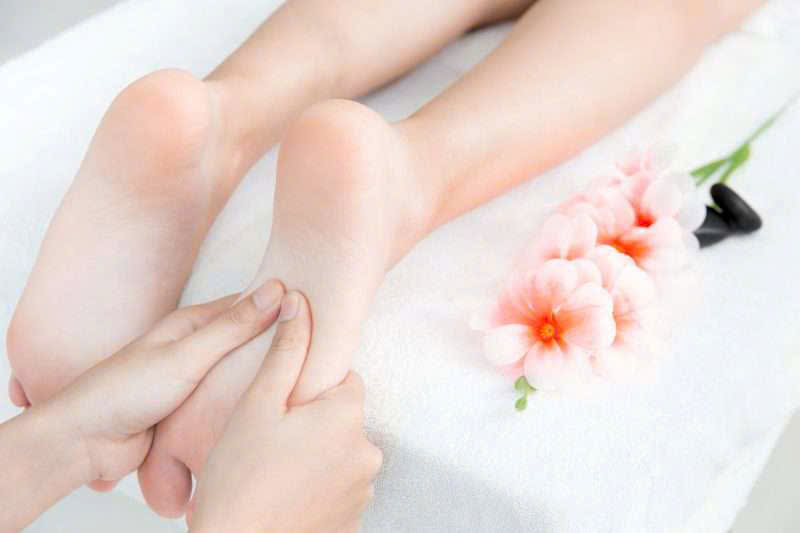
Setting clear intentions and goals
Before your session, take time to consider what you want to achieve. Whether it’s relief from specific pain, general relaxation, or improving flexibility, having clear goals directs the therapist’s focus and allows for tailored treatment.
Effective massage session tips include communicating these intentions during treatment. This proactive approach is part of massage do’s and don’ts that foster a more satisfying and productive session.
Hydration and nutrition
As previously discussed, staying well-hydrated and eating a light, nutritious meal accurately enhances the benefits of massage. Hydration flushes out toxins and keeps muscles supple, while proper nutrition sustains energy throughout the session.
Avoid caffeine or diuretics, as they can dehydrate you. Aim to drink water regularly before your appointment and avoid alcohol to promote relaxation and tissue health.
Dressing appropriately
Choosing loose, comfortable clothing allows the therapist easier access to the target areas. Wearing minimal jewelry and avoiding restrictive attire are additional massage session tips that streamline the process and help you relax fully.
If your session involves undressing, confirm beforehand whether you should wear undergarments or disrobe completely. Clear communication regarding these preferences ensures your comfort and privacy.
Mental preparation
Stress and anxiety can antagonize relaxation. Practice mindfulness exercises like deep breathing, meditation, or visualization to calm your mind before the appointment.
Enter the session with a positive mindset, eager to unwind and open to therapeutic touch. This mental attitude aligns with best massage experience advice and greatly enhances benefits of massage therapy.
Physical considerations
Arrive early to your appointment to avoid rushing, which can heighten stress and tension. Use the time for light stretching or walking to warm up your muscles gently. Ensure your body is free from tight clothing, and if you have any health concerns or recent injuries, communicate these to your therapist beforehand.
The goal is to arrive physically prepared so the session can proceed smoothly, targeting your specific needs without delay or discomfort.
After massage care tips
Completing your massage session with mindful after massage care tips is crucial in maintaining and enhancing the benefits. Many clients overlook post-session routines, which can negate some of the positive effects or lead to discomfort.
Taking simple steps after your massage can reinforce relaxation, facilitate detoxification, and support overall health. These after massage care tips are easy to implement and vital for improving massage results.
Hydration and nutrition
Post-massage hydration continues to be essential. Drinking plenty of water helps eliminate toxins released during the massage, reduces soreness, and supports natural healing processes.
Consuming nourishing, easily digestible foods such as fruits or vegetables can replenish energy levels and promote recovery. Avoid alcohol and caffeine immediately after the session to prevent dehydration and interference with relaxation.
Gentle stretching and movement
Incorporate light stretching or walking to keep muscles limber. This promotes circulation, relieves residual stiffness, and prevents muscles from tightening again.
Avoid strenuous exercise immediately after your massage, which could counteract the relaxation achieved. Instead, opt for calming activities such as yoga or gentle swimming that complement the relaxed state.
Rest and relaxation
Allow yourself ample time to rest post-massage. Creating a quiet, comfortable environment enhances the calming effects and helps your body integrate the therapeutic changes.
Practicing breathing exercises or meditation during this time can deepen your sense of relaxation and mental clarity, reinforcing the benefits of massage therapy.
Monitoring your response and scheduling follow-ups
Pay attention to how your body reacts over the next few hours or days. Mild soreness or fatigue can occur but should diminish quickly with proper care.
Schedule regular sessions if appropriate, as consistent massage therapy can bring sustained health advantages and address ongoing issues effectively.
Common massage mistakes to avoid
Beyond individual errors, certain massage mistakes are pervasive across clients and practitioners alike. Recognizing these pitfalls allows you to take corrective action, ensuring a more effective and safe session.
Many of these mistakes could be easily prevented with simple awareness and strategic planning. Avoiding these errors leads to longer-lasting benefits, less discomfort, and a more satisfying experience overall.
Overreliance on practitioners to address all issues
Some clients expect their therapist to fix every problem in one session, which is not always feasible. Understanding the limits of what massage can do, especially for chronic or complex conditions, fosters realistic expectations.
Define goals beforehand and communicate clearly. Consider combining massage with other therapies like physical therapy or chiropractic care to comprehensively address health issues, rather than relying solely on massage.
Ignoring warning signs and contraindications
Ignoring symptoms such as severe pain, swelling, or signs of infection during or after massage can lead to adverse effects. Always disclose medical history to your therapist, especially if you have underlying health conditions.
In certain cases, massage may be contraindicated, and attempting self-treatment without guidance could worsen the condition. Recognizing what not to do before and during massage is essential for safe practice.
Using the wrong massage technique
Not all massage techniques suit every individual or condition. A deep tissue massage isn’t appropriate for everyone, especially if you’re new to massage or sensitive to pressure. Conversely, clients seeking relaxation may dislike vigorous methods.
Discuss your preferences and health concerns with your therapist. Selecting the right technique aligns with massages do’s and don’ts and maximizes benefits of massage therapy.
Neglecting aftercare and follow-up
Some clients incorrectly think the session ends once they leave the clinic, neglecting after massage care tips. Skipping hydration, stretching, or delaying follow-up appointments reduces long-term benefits.
Understand that massage is part of a broader wellness routine. Consistent care, combined with awareness of common massage mistakes to avoid, creates cumulative health improvements.
Not adjusting self-care routines
Post-massage soreness or fatigue might tempt clients to revert to unhealthy habits. Instead, practice self-care strategies, maintain hydration, and stay active with gentle movements.
This proactive approach mitigates massage mistakes that hinder progress, supports recovery, and fosters long-lasting wellness.
Reduce massage effectiveness
Certain behaviors or misconceptions can inadvertently reduce massage effectiveness. Recognizing these massage mistakes and adjusting your approach can significantly enhance gains from each session.
Mistakes like rushing, neglecting hydration, or poor communication impair results and limit your experience. Applying strategies to reduce massage effectiveness are essential in building a sustainable therapeutic routine.
Rushing into hot or cold therapies prematurely
Using hot packs or cold compresses immediately after massage without guidance can interfere with tissue healing or cause discomfort. Sometimes clients apply these remedies without consulting their therapist.
Follow professional advice regarding post-massage applications. Proper timing ensures thermal therapies support, rather than hinder, your recovery and relaxation process.
Overloading physical activities post-massage
Engaging in intense workouts or physical tasks right after massage can negate some benefits. Excessive exertion strains muscles that are temporarily more relaxed and vulnerable.
Plan your activities wisely, incorporating after massage care tips like light walking or stretching instead. This approach preserves the benefits of massage therapy and prevents setbacks.
Maintaining unhealthy lifestyle habits
Poor diet, dehydration, or high stress levels outside the massage environment can staticize the gains achieved during the session. Consider massage as part of a comprehensive wellness routine that includes healthy habits.
Addressing massage mistakes outside the treatment room amplifies the benefits and promotes sustained health improvements.
Ignoring the importance of consistency
A one-off massage may offer temporary relief but is less effective than regular sessions. Many clients underestimate the value of consistent care.
Integrate massages into your health routine, focusing on consistent massage session tips and best massage experience advice, to see tangible, long-term benefits.
Skipping routine follow-up care
Failing to act on after massage care tips such as hydration, stretching, and rest reduces the overall effectiveness. The body requires ongoing attention to maintain the positive effects.
Create a personalized routine that complements massage therapy, guiding towards an improved quality of life and continuous health.
Massage session tips
To optimize each massage appointment, both clients and therapists can adopt various massage session tips that foster a productive, comfortable, and rewarding experience.
These guidelines ensure that the benefits of massage therapy are maximized and that both parties are aligned in expectations and communication. Attention to these details also helps in improving massage results and avoiding massage mistakes.
Arrive early and prepared
Arriving 10-15 minutes prior to your appointment provides ample time to relax, complete necessary paperwork, and communicate your needs. Use this time to mentally prepare, as mental preparation significantly affects relaxation.
Being punctual and prepared reduces stress, enhances focus, and sets a positive tone for the session. It’s an essential massage do’s and don’ts that can influence your overall satisfaction.
Communicate effectively during the session
Clear communication about preferences, discomfort, or pain is key. Don’t hesitate to request adjustments—whether it’s more pressure or focusing on specific areas.
A successful massage session is collaborative. Informing your therapist about your feedback helps improve massage results and ensures your specific needs are addressed, which is crucial for best massage experience advice.
Wear appropriate clothing and maintain comfort
Depending on the type of massage, you may need to undress or wear loose clothing. Confirm expectations beforehand. Ensure your clothing is comfortable, and limit accessories or restrictive garments.
Comfort enhances relaxation, minimizes distractions, and allows the therapist easy access to key areas, facilitating a more effective session.
Be mindful of your breathing and body language
Deep, slow breathing signals relaxation and can help relieve tension. Likewise, maintaining open, receptive body language encourages a smoother flow of therapeutic touch.
Being mindful of your physical responses communicates to the therapist that you are engaged. These small details contribute to improving massage results and personal comfort.
Respect boundaries and therapist’s expertise
Trust your therapist’s guidance and respect professional boundaries. If you feel uncomfortable, communicate immediately. Respect builds a safe environment where massage do’s and don’ts are upheld.
This mutual understanding fosters a positive experience, minimizing massage mistakes and promoting optimal benefits.
Massage do’s and don’ts
Adhering to massage do’s and don’ts maximizes safety, comfort, and effectiveness. While massage is generally safe, understanding proper protocols and common pitfalls helps clients avoid massage mistakes that could compromise the experience.
Clarifying these principles creates a foundation for engaging in massage therapy confidently and responsibly.
Do communicate openly and honestly
Clear dialogue with your therapist about your expectations, health concerns, and feedback during the session ensures tailored treatment and prevents misunderstandings.
Honest communication enhances trust, contributes to best massage experience advice, and is integral to improving massage results.
Don’t ignore your body’s signals to avoid massage mistakes
Pain is a message from your body. If the pressure or technique causes discomfort, immediately inform your therapist. Pushing through pain can cause injury and diminish the session’s benefits.
Recognizing common massage mistakes such as ignoring discomfort helps in making necessary adjustments for safety and effectiveness.
Do arrive well-hydrated
As stressed earlier, hydration is fundamental in supporting detoxification and tissue health. Ensure you drink enough water before and after the session to facilitate optimal results.
Don’t expect instant miracles
Massage therapy is a process that often requires multiple sessions to address long-term issues. Avoid expecting immediate fixes for chronic problems, and view massage as part of an ongoing wellness plan.
Do trust your therapist’s expertise
Valuing your therapist’s professional judgment fosters a positive therapeutic relationship. If unsure about techniques or routines, ask questions rather than making assumptions.
Adhering to these massage do’s and don’ts contributes significantly to improving massage results and ensuring a safe, satisfying session.
Improving massage results
Achieving the best massage experience requires more than just the session itself; it involves strategic improving massage results before, during, and after treatment.
Educating yourself on what not to do before a massage, how to prepare for a massage, and after massage care tips helps in fostering an environment conducive to healing and relaxation.
Consistency and regularity
One of the most crucial factors in enhancing massage benefits is regularity. A scheduled routine allows your body to respond positively, reduce chronic tension, and benefit fully from incremental improvements.
Incorporate massages into your ongoing health care, especially if targeting persistent issues. This approach establishes a rhythm of care that steadily improves overall wellness.
Optimizing communication and expectations
Clearly articulating your goals and feedback during the session ensures your therapist tailors treatment accordingly. This ongoing dialogue aligns the massage process with your needs, dramatically improving massage results.
Be open about discomfort, pressure preferences, and specific concern areas. Proper communication prevents massage mistakes that could hinder progress.
Combining massage with other health activities
Incorporate complementary practices such as stretching, physical therapy, yoga, or meditation to bolster the effects of massage. These activities synergize to improve flexibility, reduce stress, and address underlying health issues.
A multi-modal approach yields better outcomes, emphasizing the importance of holistic wellness routines alongside massage benefits.
Prioritizing rest and recovery
Post-massage rest allows your body to better absorb the benefits. Avoid strenuous activities immediately following your session.
Creating an environment conducive to relaxation—such as taking a bath or practicing breathing exercises—can significantly improve massage results and extend the feeling of well-being.
Education and resourcefulness to avoid massage mistakes
Staying informed about massage do’s and don’ts and after massage care tips empowers you to take control of your health. Knowledge minimizes common massage mistakes to avoid and fosters a proactive attitude toward wellness.
Participation in your care journey enhances overall effectiveness, motivation, and satisfaction with your massage experience.
Best massage experience advice
Achieving the best massage experience combines proper preparation, active communication, and post-session care. It’s a collaborative effort that maximizes the health, relaxation, and rejuvenation benefits.
This section consolidates massage do’s and don’ts and offers practical advice to ensure each session hits the mark.
Communicate your needs clearly to avoid massage mistakes
Always inform your therapist about your goals, pain points, and preferences. Effective communication allows your therapist to adapt techniques and pressure to suit your unique needs, leading to a more customized and satisfying experience.
Prioritize comfort and relaxation
Wear loose, comfortable clothing, arrive early, and engage in calming mental practices like deep breathing. These steps set the stage for deep relaxation and improving massage results.
Follow recommended post-care routines
Hydrate, gently stretch, and rest after your session. Incorporate after massage care tips to preserve the session’s benefits and promote ongoing wellness.
Be consistent and proactive
Scheduling regular massages and actively participating in your health strategy enhances the long-term benefits of massage therapy. Remember that massage is a vital component of holistic health, not a one-time fix. massage mistakes
Trust your therapist’s guidance, understand the massage do’s and don’ts, and don’t hesitate to voice concerns. This mutual respect elevates the quality of your experience.https://jobedubaispa.com/massage-3/
Conclusion
Mastering the art of effective massage therapy involves avoiding massage mistakes such as poor communication, neglecting hydration, and improper post-care routines. Proper how to prepare for a massage, what not to do before, and after massage care tips are essential in ensuring each session is as beneficial as possible. By integrating these insights into your wellness routine, you can optimize massage benefits of massage therapy and enjoy a best massage experience. Remember, an informed, proactive approach transforms massage from a simple session into a powerful tool for holistic health and well-being.https://www.google.com/knowledgegraphshares?client=mobilesearchapp&sca_esv=b028dc8ec1d9dff5&bih=879&biw=428&channel=iss&cs=0&hl=vi&rlz=1MDAPLA_viAE995AE995&v=372.0.765951532&sxsrf=AE3TifM54Yon2BzKzAbwaxh-sMX16CRcag:1750078915591&kgmid=/g/11ldd2b847&q=Thai+massage+-+spa+massage+home+service+downtown+Dubai&shndl=30&shem=lcuae,uaasie&source=sh/x/loc/tile/m1/5&kgs
